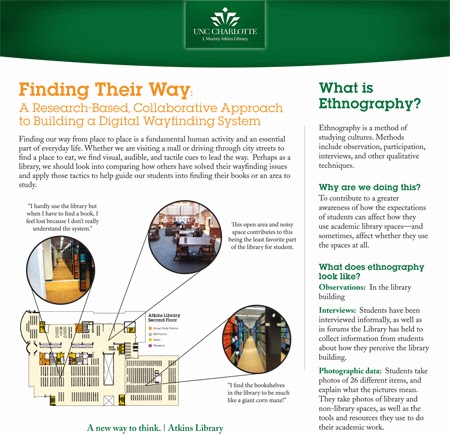My second attendance at Educause, and this one was in Anaheim.
I had a full Wednesday of presentations. One presentation was with my Visitors and Residents collaborators, Lynn Connaway and Erin Hood from OCLC (but sans David White, who was with us in spirit even as he stayed in Oxford). We talked about our analysis of the data we’ve been collecting since 2010 on modes of engagement with digital places, people, technology, and information. I was gratified that the themes revealed in our work, and in particular our conclusions about how important people and relationships are to the choices people make when engaging with technology and the web, were so well represented in other presentations at Educause, including Sir Ken Robinson’s keynote, and Mimi Ito’s presentation on her work regarding Connected Learning. As an anthropologist, I am of course a big fan of researchers (like fellow anthropologist Mimi Ito!) pointing out to Education Technology specialists like the ones who attend Educause that that they need to pay attention to people, their behavior, and their motivations, and not get distracted by the specifics of the shiny tools that people are using at any given moment.
I also presented a poster session with my colleague Bob Price, Director of Digital Initiatives at UNC Charlotte. We were focusing on two primary things: the wayfinding tool that our Digital Initiatives department built, and the research processes that helped inform why we wanted to build the tool (not just because it would be shiny!), and the plans we have for it going forward.
Our poster was in two parts, designed by our fantastic colleague and web graphic designer Maggie Ngo)
Click to see larger version of Posters 1 and 2
Thanks to all who stopped by, the conversations were wonderful, and the interest in our work truly gratifying) was that this sort of project was inspired in part by the open-ended exploratory research I’ve been doing among our students. The photo diaries I have been having undergraduates do for the last 3 or 4 semesters have been a way to evaluate and observe the habits of our students in terms of where and how they do their academic work, regardless of whether they are in the library or not. Some of the prompts ask library-specific questions, and some ask much broader questions about their practices, without cues to talk about the library (I adapted the photo diary instrument from a similar one used by Nancy Fried Foster and her team, in her research at Rochester). The photo diaries from our UNC Charlotte students revealed a deep level of ambivalence about some library spaces, in particular the stacks, and the corridors. Valuable resources are in the stacks, and along the corridors–the latter is how you find study rooms, classrooms, and our reference librarians, in our physical building.
We saw leveraging digital tools to give students a way to become more familiar with our building as a way of encouraging them to become comfortable with the building before they even walk into it. In the same way that people use Google Maps to figure out where they are going in an unfamiliar place, our students can use our digital wayfinder to plan their route, to see what lies where, and to generally get a feel for the physical spaces, before they are even there.
The campus population at UNC Charlotte has many first-generation college students, as well as transfer students who were accustomed to buildings and resources at their previous institution. Even traditional first year full time freshmen might have mental barriers to entering a university library building, which can seem large and intimidating to someone not used to these sort of institutional spaces. It is our responsibility to try to respond to the need for students to access our useful spaces (like libraries), by making them navigable, familiar, friendly.
In future iterations of our wayfinding tool, we hope to go beyond the physical building, which is just a part of what our library has to offer. Linking our digital resources and spaces in with the wayfinder will give our patrons a more holistic vision of what we contain: electronic resources, booking software that allows students to connect with each other in study groups, connections with liaisons via chat, text, and email, and other tools we haven’t built yet.
We welcome comments, and those interested in collaborating with us on future versions of the Wayfinder.

.jpg)